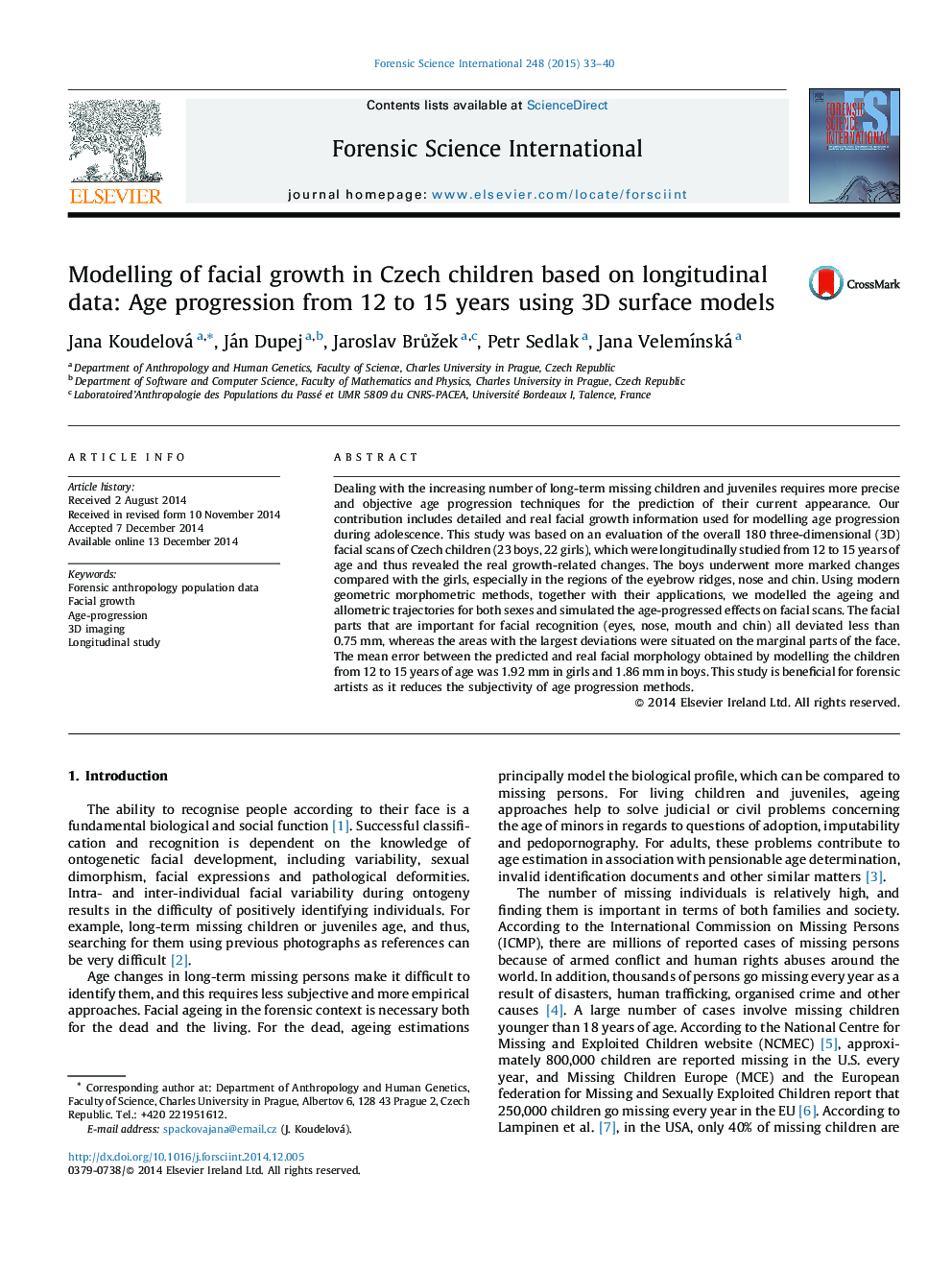| Article ID | Journal | Published Year | Pages | File Type |
|---|---|---|---|---|
| 95501 | Forensic Science International | 2015 | 8 Pages |
•We study a longitudinal set of facial scans of adolescents from 12 to 15 years.•Facial growth models are constructed for each sex using multivariate regression.•We simulate age-progression and compare the results to real aged faces.•Simulation produced the lowest error in eye, nose and mouth regions.•Age-progression subjectivity is minimised due to modelling with real-world data.
Dealing with the increasing number of long-term missing children and juveniles requires more precise and objective age progression techniques for the prediction of their current appearance. Our contribution includes detailed and real facial growth information used for modelling age progression during adolescence. This study was based on an evaluation of the overall 180 three-dimensional (3D) facial scans of Czech children (23 boys, 22 girls), which were longitudinally studied from 12 to 15 years of age and thus revealed the real growth-related changes. The boys underwent more marked changes compared with the girls, especially in the regions of the eyebrow ridges, nose and chin. Using modern geometric morphometric methods, together with their applications, we modelled the ageing and allometric trajectories for both sexes and simulated the age-progressed effects on facial scans. The facial parts that are important for facial recognition (eyes, nose, mouth and chin) all deviated less than 0.75 mm, whereas the areas with the largest deviations were situated on the marginal parts of the face. The mean error between the predicted and real facial morphology obtained by modelling the children from 12 to 15 years of age was 1.92 mm in girls and 1.86 mm in boys. This study is beneficial for forensic artists as it reduces the subjectivity of age progression methods.
